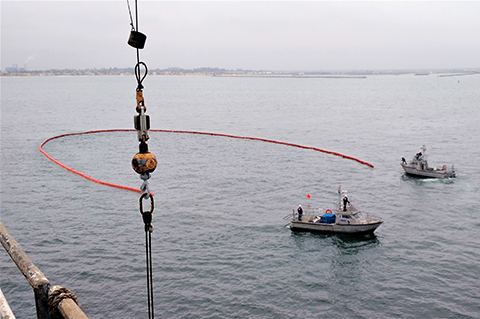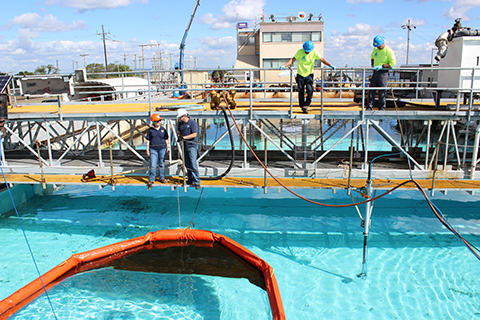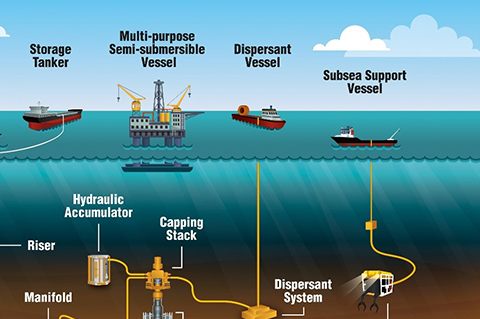BSEE administers a robust Oil Spill Preparedness Program through its Oil Spill Preparedness Division (OSPD) to ensure owners and operators of offshore facilities are ready to mitigate substantial threats of and to respond to actual oil spills that may result from their activities. The Program draws its mandate and purpose from the Federal Water Pollution Control Act of October 18, 1972, as amended, and the Oil Pollution Act of 1990 (October 18, 1991). It is framed by the regulations in 30 CFR Part 254 – Oil Spill Response Requirements for Facilities Located Seaward of the Coastline, and 40 CFR Part 300 – National Oil and Hazardous Substances Pollution Contingency Plan.
Acknowledging these authorities and their associated responsibilities, BSEE established the program with three primary and interdependent roles. Through these roles, the Bureau performs numerous functions for improving the nation’s spill preparedness and response capabilities, including, comprehensive contingency planning, equipment testing and inspection, quality training, unannounced exercises, research and development (R&D) endeavors, and close engagement with the stakeholders of the National Response System (NRS). We invite you to explore the links to the three roles to learn more in-depth details about the Program.
Important References and Tools
The following websites and document links provide quick access to select references and tools frequently used in the Oil Spill Preparedness Program.
Oil Spill Regulations and Notices to Lessees
- 30 CFR Part 254 – Oil Spill Response Requirements for Facilities Located Seaward of the Coastline
- 40 CFR Part 300 – National Oil and Hazardous Substances Pollution Contingency Plan
- NTL 2012-N06 - Guidance to Owners and Operators of Offshore Facilities Seaward of the Coast Line Concerning Regional Oil Spill Response Plans - Notice to Lessees published 8/10/2012.
- NTL 2012-N07 - Oil Discharge Written Follow-up Reports - Notice to Lessees published 11/16/2012.
- NTL 2013-N02 - Significant Change to Oil Spill Response Plan Worst Case Discharge Scenario - Notice to Lessees published 8/26/2013.
Contingency Planning, Exercise, and Incident Management Tools
- Worst Case Discharge Scenarios for Oil and Gas Offshore Facilities and Oil Spill Response Equipment Capabilities – BSEE contracted studies that review worst case discharge scenarios and their issues for contingency planning purposes.
- E-Permits OSRP Component – BSEE’s software program where plan holders can electronically submit their Oil Spill Response Plans to OSPD.
- 2016.1 Preparedness for Response Exercise Program (PREP) Guidelines - updated and published in the Federal Register (10/2/2018)
- Recovery of Oil on Snow and Ice (ROSI) Calculator – Online tool to help calculate the amount of yellow gear equipment (loaders, dump trucks, dozers) required to recover oil in snow and solid ice.
To report an offshore incident or spill:
Emergency Contact Procedures
Oil spill response tactics like the ones shown here are described in and exercised from the industry Oil Spill Response Plans reviewed by BSEE in its Oil Spill Preparedness Program. The science, technologies, and policies associated with spill response tactics and strategies are also improved through the program’s R&D initiatives.
During an offshore oil spill incident, BSEE also executes important responsibilities alongside its NRS partners to control the source of the spill and mitigate its effects. Explore the link Oil Spill Response Support for additional details and helpful resources on BSEE’s role within the Incident Command System during a spill.






